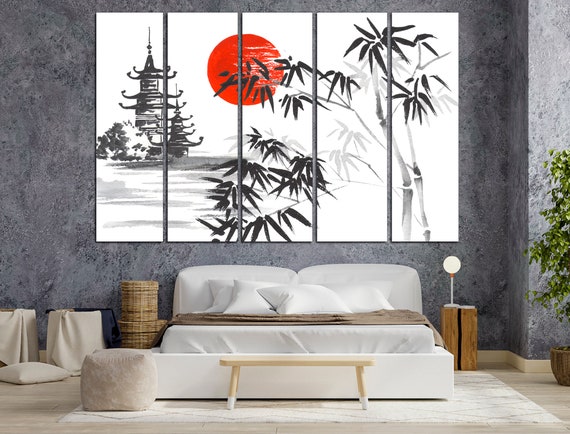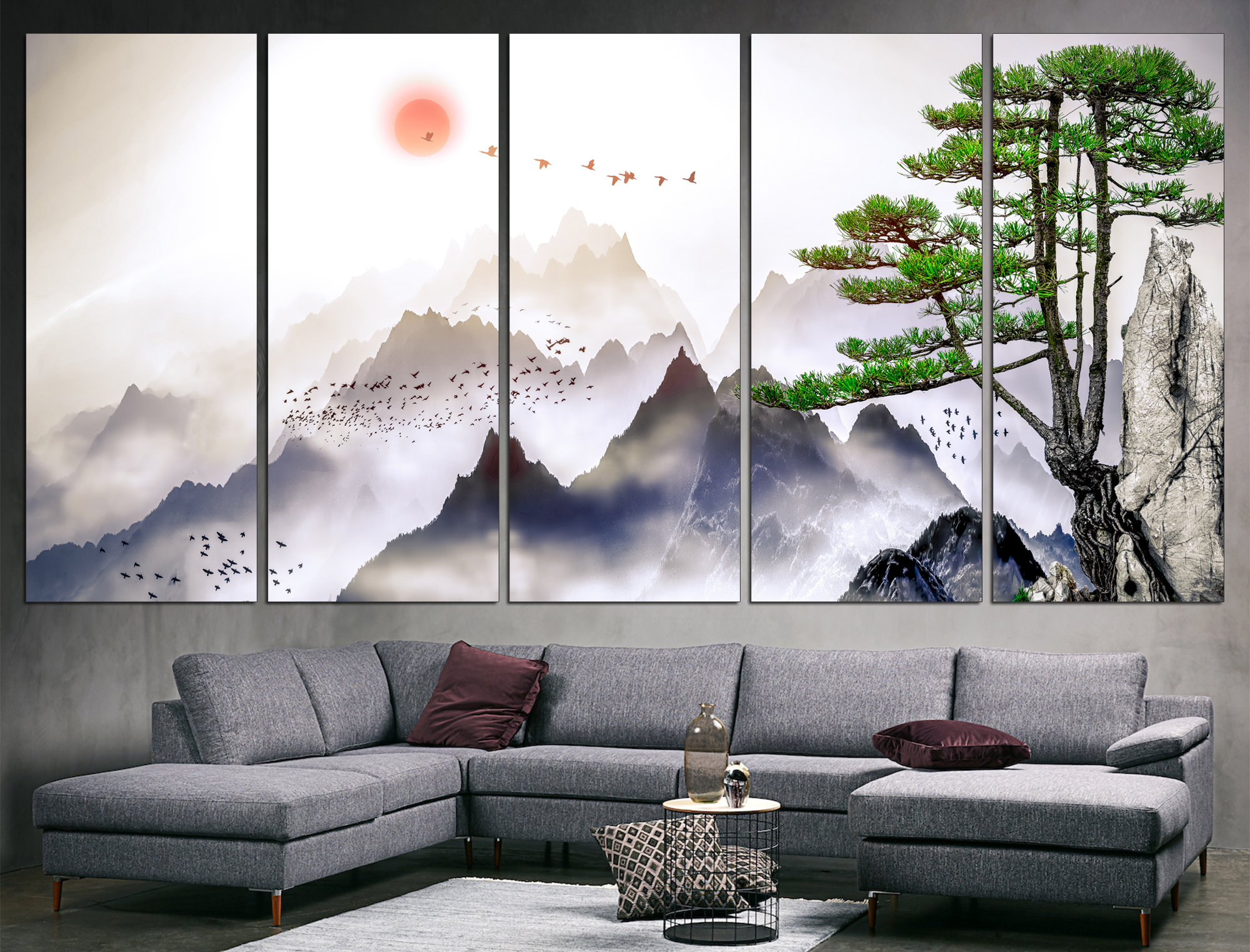When it comes to home decor, few styles can match the serene elegance and timeless beauty of Japanese wall decor. Infused with rich cultural significance and aesthetic discipline, Japanese decor brings a sense of calm and tranquility into your space. In this comprehensive guide, we will explore various aspects of Japanese wall decor, from traditional elements to contemporary interpretations, and provide you with practical tips to create your own peaceful sanctuary.
Understanding Japanese Wall Decor
Japanese wall decor encompasses a wide range of styles, materials, and techniques that reflect the country’s cultural heritage. Rooted in principles of minimalism, nature, and balance, it invites both simplicity and sophistication into the home. Let’s delve deeper into what makes Japanese wall decor so appealing.
The Philosophy Behind Japanese Decor
Japanese design is heavily influenced by concepts such as **wabi-sabi**, which celebrates imperfection and transience, and **shibui**, which emphasizes understated beauty. These philosophies encourage a connection with nature and an appreciation for the simplicity of life.

Key Elements of Japanese Wall Decor
- Natural Materials: Wood, bamboo, and paper are frequently used.
- Nature-Inspired Themes: Images of landscapes, flora, and fauna are common.
- Minimalism: Clutter-free designs that emphasize space and light.
- Traditional Techniques: Calligraphy, origami, and ink painting are popular forms of art.
Popular Styles of Japanese Wall Decor

Japanese wall decor can be classified into several styles, each with its unique characteristics and cultural significance. Let’s explore some of the most popular styles.
1. Traditional Japanese Art

Traditional Japanese art forms such as ukiyo-e (woodblock prints) and kintsugi (the art of repairing broken pottery with gold) add a historical richness to wall decor. These art forms tell stories and evoke emotions, making them perfect focal points for any room.
Pros and Cons of Traditional Japanese Art
| Pros | Cons |
|---|---|
| Rich cultural significance | Can be costly |
| Timeless appeal | Requires careful maintenance |

2. Modern Japanese Decor
Combining traditional elements with contemporary design, modern Japanese decor embraces clean lines and innovative materials. Think minimalist furniture paired with vibrant wall art that retains a connection to nature.

Key Modern Elements
- Geometric Patterns: Incorporating modern patterns while keeping Japanese aesthetics in mind.
- Bold Colors: Using splashes of color against neutral backdrops.
- Functional Art: Decor that also serves a purpose, such as wall-mounted planters.
3. Zen-Inspired Decor

Zen philosophy plays a significant role in Japanese decor. Zen-inspired wall decor often features calming images and natural elements that promote tranquility and mindfulness.
Creating a Zen Environment
To create a Zen-inspired space, consider adding:
- Soft Lighting: Use paper lanterns or soft LED lights.
- Nature Elements: Incorporate plants or nature photography.
- Calm Artwork: Choose pieces that evoke feelings of peace.

Materials Commonly Used in Japanese Wall Decor
The materials chosen for Japanese wall decor often reflect a deep respect for nature. Here are some popular materials and their uses:
1. Wood
Wood is a fundamental material in Japanese decor. From wooden panels to intricate carvings, it adds warmth and character to any space. Cedar and pine are often used for their pleasant aroma and durability.
2. Paper
Rice paper is a hallmark of Japanese design, frequently used in shoji screens and wall art. Its translucence allows for beautiful diffusion of light, creating a serene ambiance.
3. Fabric
Textiles, such as silk and cotton, can be utilized in wall hangings and upholstery. They bring color and texture into the décor.
How to Incorporate Japanese Wall Decor in Your Home
Now that we’ve explored the essentials of Japanese wall decor, let’s discuss practical tips for incorporating these elements into your own space.
Step 1: Select Your Style
Begin by determining which Japanese style resonates with you—traditional, modern, or Zen-inspired. This will guide your choices in decor elements.
Step 2: Choose Your Color Palette
Japanese decor often features natural colors inspired by the elements. Opt for soft earth tones, greens, and blues to create a calming atmosphere.
Step 3: Opt for Minimalism
Embrace the idea of less is more by decluttering your space. Focus on a few key art pieces or decor elements that truly resonate with you.
Step 4: Add Nature
Bringing in plants or nature-inspired artwork can bridge the gap between indoor and outdoor spaces, enhancing the overall connection to nature.
Step 5: Mix and Match
Don’t be afraid to experiment by mixing different styles and materials. A modern piece can beautifully contrast with a traditional one, creating a dynamic visual interest.
Showcase Your Japanese Wall Decor
Once you have your decor in place, it’s essential to showcase it effectively. Here are some ideas to present your artwork and decor elements:
1. Gallery Wall
Create a gallery wall with a mix of traditional and modern art pieces. Use different frame styles for a more eclectic look.
2. Accent Walls
Consider painting an accent wall in a soft color to make your wall art stand out. This can be complemented with natural wooden shelves to display smaller pieces.
3. Layering Textures
Incorporate various textures by using textiles like cushions or wall hangings that compliment the main art pieces.
Maintenance Tips for Japanese Wall Decor
To keep your Japanese wall decor looking its best, consider the following maintenance tips:
1. Regular Dusting
Dust your wall art and decor regularly to prevent buildup and maintain their appearance.
2. Use Gentle Cleaners
When cleaning, use gentle, non-abrasive cleaners to protect delicate materials like paper and fabric.
3. Monitor for Sunlight Damage
Be mindful of sunlight exposure, as it can fade colors over time. Use UV-protective glass for artwork that is displayed in sunny areas.
Frequently Asked Questions (FAQs)
What are the advantages of using Japanese wall decor?
Japanese wall decor promotes a peaceful atmosphere, emphasizes simplicity, and connects the indoor space with nature, leading to a more balanced living environment.
How can I create a Japanese-inspired room on a budget?
Start small by incorporating a few key elements, such as wall art or a shoji screen. You can find affordable options at home decor stores or even consider DIY projects for a personal touch.
Is it necessary to follow traditional designs when incorporating Japanese decor?
No, while traditional designs provide a foundation, you can mix modern elements with traditional ones to create a unique space that reflects your personality.
Can Japanese wall decor work in any home style?
Yes! Japanese decor can complement various styles, including contemporary, rustic, and even industrial, by incorporating key elements and focusing on harmony and balance.
What types of art should I choose for my Japanese decor?
Focus on nature-themed art, calligraphy, or minimalist designs. Choose pieces that evoke feelings of peace and connection to nature.
Conclusion
Japanese wall decor offers a beautiful blend of tradition, nature, and harmony, making it an ideal choice for those seeking to create a tranquil living space. By understanding the principles of Japanese aesthetics and selecting the right elements, you can transform your home into a peaceful retreat. Whether you lean towards the classic or modern interpretations, the essence of Japanese wall decor is to invite balance, serenity, and beauty into your life.